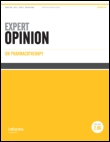

{"user_id":2,"source":"https://www.visualcapitalist.com/history-of-pandemics-deadliest/","source_type":"rich","title":"Visualizing the History of Pandemics","description":"The history of pandemics, from the Antonine Plague to the novel coronavirus (COVID-19) event, ranked by their impact on human life.","html":"\n \u003ch1 id=\"cr-title\"\u003eVisualizing the History of Pandemics\u003c/h1\u003e\n \u003cdiv id=\"cr-content\"\u003e\u003cdiv id=\"readability-page-1\" class=\"page\"\u003e\u003cdiv id=\"tps_slideContainer_55526\"\u003e\u003cdiv\u003e\n\n\n\u003cp\u003e\u003cem\u003ePan·dem·ic /panˈdemik/ (of a disease) prevalent over a whole country or the world.\u003c/em\u003e\u003c/p\u003e\n\u003cp\u003eAs humans have spread across the world, so have infectious diseases. Even in this modern era, outbreaks are nearly constant, though not every outbreak reaches pandemic level as the Novel Coronavirus (COVID-19) has.\u003c/p\u003e\n\u003cp\u003eToday’s visualization outlines some of history’s most deadly pandemics, from the Antonine Plague to the current COVID-19 event.\u003c/p\u003e\n\u003ch2 id=\"a-timeline-of-historical-pandemics\"\u003eA Timeline of Historical Pandemics\u003c/h2\u003e\n\u003cp\u003eDisease and illnesses have plagued humanity since the earliest days, our mortal flaw. However, it was not until the marked shift to agrarian communities that the scale and spread of these diseases increased dramatically.\u003c/p\u003e\n\u003cp\u003eWidespread trade created new opportunities for human and animal interactions that sped up such epidemics. Malaria, tuberculosis, leprosy, influenza, smallpox, and others first appeared during these early years. \u003c/p\u003e\n\u003cp\u003eThe more civilized humans became – with larger cities, more exotic trade routes, and increased contact with different populations of people, animals, and ecosystems – the more likely pandemics would occur.\u003c/p\u003e\n\u003cp\u003eHere are some of the major pandemics that have occurred over time:\u003c/p\u003e\n\n\u003ctable id=\"tablepress-833\"\u003e\n\u003cthead\u003e\n\u003ctr\u003e\n\t\u003cth\u003eName\u003c/th\u003e\u003cth\u003eTime period\u003c/th\u003e\u003cth\u003eType / Pre-human host\u003c/th\u003e\u003cth\u003eDeath toll\u003c/th\u003e\n\u003c/tr\u003e\n\u003c/thead\u003e\n\u003ctbody\u003e\n\u003ctr\u003e\n\t\u003ctd\u003eAntonine Plague\u003c/td\u003e\u003ctd\u003e165-180\u003c/td\u003e\u003ctd\u003eBelieved to be either smallpox or measles\u003c/td\u003e\u003ctd\u003e5M\u003c/td\u003e\n\u003c/tr\u003e\n\u003ctr\u003e\n\t\u003ctd\u003eJapanese smallpox epidemic\u003c/td\u003e\u003ctd\u003e735-737\u003c/td\u003e\u003ctd\u003eVariola major virus\u003c/td\u003e\u003ctd\u003e1M\u003c/td\u003e\n\u003c/tr\u003e\n\u003ctr\u003e\n\t\u003ctd\u003ePlague of Justinian\u003c/td\u003e\u003ctd\u003e541-542\u003c/td\u003e\u003ctd\u003eYersinia pestis bacteria / Rats, fleas\u003c/td\u003e\u003ctd\u003e30-50M\u003c/td\u003e\n\u003c/tr\u003e\n\u003ctr\u003e\n\t\u003ctd\u003eBlack Death\u003c/td\u003e\u003ctd\u003e1347-1351\u003c/td\u003e\u003ctd\u003eYersinia pestis bacteria / Rats, fleas\u003c/td\u003e\u003ctd\u003e200M\u003c/td\u003e\n\u003c/tr\u003e\n\u003ctr\u003e\n\t\u003ctd\u003eNew World Smallpox Outbreak\u003c/td\u003e\u003ctd\u003e1520 – onwards\u003c/td\u003e\u003ctd\u003eVariola major virus\u003c/td\u003e\u003ctd\u003e56M\u003c/td\u003e\n\u003c/tr\u003e\n\u003ctr\u003e\n\t\u003ctd\u003eGreat Plague of London\u003c/td\u003e\u003ctd\u003e1665\u003c/td\u003e\u003ctd\u003eYersinia pestis bacteria / Rats, fleas\u003c/td\u003e\u003ctd\u003e100,000\u003c/td\u003e\n\u003c/tr\u003e\n\u003ctr\u003e\n\t\u003ctd\u003eItalian plague\u003c/td\u003e\u003ctd\u003e1629-1631\u003c/td\u003e\u003ctd\u003eYersinia pestis bacteria / Rats, fleas\u003c/td\u003e\u003ctd\u003e1M\u003c/td\u003e\n\u003c/tr\u003e\n\u003ctr\u003e\n\t\u003ctd\u003eCholera Pandemics 1-6\u003c/td\u003e\u003ctd\u003e1817-1923\u003c/td\u003e\u003ctd\u003eV. cholerae bacteria\u003c/td\u003e\u003ctd\u003e1M+\u003c/td\u003e\n\u003c/tr\u003e\n\u003ctr\u003e\n\t\u003ctd\u003eThird Plague\u003c/td\u003e\u003ctd\u003e1885\u003c/td\u003e\u003ctd\u003eYersinia pestis bacteria / Rats, fleas\u003c/td\u003e\u003ctd\u003e12M (China and India)\u003c/td\u003e\n\u003c/tr\u003e\n\u003ctr\u003e\n\t\u003ctd\u003eYellow Fever\u003c/td\u003e\u003ctd\u003eLate 1800s\u003c/td\u003e\u003ctd\u003eVirus / Mosquitoes\u003c/td\u003e\u003ctd\u003e100,000-150,000 (U.S.)\u003c/td\u003e\n\u003c/tr\u003e\n\u003ctr\u003e\n\t\u003ctd\u003eRussian Flu\u003c/td\u003e\u003ctd\u003e1889-1890\u003c/td\u003e\u003ctd\u003eBelieved to be H2N2 (avian origin)\u003c/td\u003e\u003ctd\u003e1M\u003c/td\u003e\n\u003c/tr\u003e\n\u003ctr\u003e\n\t\u003ctd\u003eSpanish Flu\u003c/td\u003e\u003ctd\u003e1918-1919\u003c/td\u003e\u003ctd\u003eH1N1 virus / Pigs\u003c/td\u003e\u003ctd\u003e40-50M\u003c/td\u003e\n\u003c/tr\u003e\n\u003ctr\u003e\n\t\u003ctd\u003eAsian Flu\u003c/td\u003e\u003ctd\u003e1957-1958\u003c/td\u003e\u003ctd\u003eH2N2 virus\u003c/td\u003e\u003ctd\u003e1.1M\u003c/td\u003e\n\u003c/tr\u003e\n\u003ctr\u003e\n\t\u003ctd\u003eHong Kong Flu\u003c/td\u003e\u003ctd\u003e1968-1970\u003c/td\u003e\u003ctd\u003eH3N2 virus\u003c/td\u003e\u003ctd\u003e1M\u003c/td\u003e\n\u003c/tr\u003e\n\u003ctr\u003e\n\t\u003ctd\u003eHIV/AIDS\u003c/td\u003e\u003ctd\u003e1981-present\u003c/td\u003e\u003ctd\u003eVirus / Chimpanzees\u003c/td\u003e\u003ctd\u003e25-35M\u003c/td\u003e\n\u003c/tr\u003e\n\u003ctr\u003e\n\t\u003ctd\u003eSwine Flu\u003c/td\u003e\u003ctd\u003e2009-2010\u003c/td\u003e\u003ctd\u003eH1N1 virus / Pigs\u003c/td\u003e\u003ctd\u003e200,000\u003c/td\u003e\n\u003c/tr\u003e\n\u003ctr\u003e\n\t\u003ctd\u003eSARS\u003c/td\u003e\u003ctd\u003e2002-2003\u003c/td\u003e\u003ctd\u003eCoronavirus / Bats, Civets\u003c/td\u003e\u003ctd\u003e770\u003c/td\u003e\n\u003c/tr\u003e\n\u003ctr\u003e\n\t\u003ctd\u003eEbola\u003c/td\u003e\u003ctd\u003e2014-2016\u003c/td\u003e\u003ctd\u003eEbolavirus / Wild animals\u003c/td\u003e\u003ctd\u003e11,000\u003c/td\u003e\n\u003c/tr\u003e\n\u003ctr\u003e\n\t\u003ctd\u003eMERS\u003c/td\u003e\u003ctd\u003e2015-Present\u003c/td\u003e\u003ctd\u003eCoronavirus / Bats, camels\u003c/td\u003e\u003ctd\u003e850\u003c/td\u003e\n\u003c/tr\u003e\n\u003ctr\u003e\n\t\u003ctd\u003eCOVID-19\u003c/td\u003e\u003ctd\u003e2019-Present\u003c/td\u003e\u003ctd\u003eCoronavirus – Unknown (possibly pangolins)\u003c/td\u003e\u003ctd\u003e11,400 (as of Mar 20, 2020)\u003c/td\u003e\n\u003c/tr\u003e\n\u003c/tbody\u003e\n\u003c/table\u003e\n\u003c!-- #tablepress-833 from cache --\u003e\n\u003cp\u003e\u003cem\u003eNote: Many of the death toll numbers listed above are best estimates based on available research. Some, such as the Plague of Justinian, are \u003ca href=\"https://www.pnas.org/content/116/51/25546\" rel=\"noopener noreferrer\" target=\"_blank\" style=\"color: rgb(95, 99, 104);\"\u003esubject to debate\u003c/a\u003e based on new evidence.\u003c/em\u003e\u003c/p\u003e\n\u003cp\u003eDespite the persistence of disease and pandemics throughout history, there’s one consistent trend over time – a gradual reduction in the death rate. Healthcare improvements and understanding the factors that incubate pandemics have been powerful tools in mitigating their impact.\u003c/p\u003e\n\u003ch2 id=\"wrath-of-the-gods\"\u003eWrath of the Gods\u003c/h2\u003e\n\u003cp\u003eIn many ancient societies, people believed that spirits and gods inflicted disease and destruction upon those that deserved their wrath. This unscientific perception often led to disastrous responses that resulted in the deaths of thousands, if not millions. \u003c/p\u003e\n\u003cp\u003eIn the case of Justinian’s plague, the Byzantine historian \u003ca href=\"https://www.ancient.eu/article/782/justinians-plague-541-542-ce/\" target=\"_blank\" style=\"color: rgb(95, 99, 104);\"\u003eProcopius of Caesarea\u003c/a\u003e traced the origins of the plague (the Yersinia pestis bacteria) to China and northeast India, via land and sea trade routes to Egypt where it entered the Byzantine Empire through Mediterranean ports. \u003c/p\u003e\n\u003cp\u003eDespite his apparent knowledge of the role geography and trade played in this spread, Procopius laid blame for the outbreak on the Emperor Justinian, declaring him to be either a devil, or invoking God’s punishment for his evil ways. Some historians found that this event could have dashed Emperor Justinian’s efforts to reunite the Western and Eastern remnants of the Roman Empire, and marked the beginning of the Dark Ages. \u003c/p\u003e\n\u003cp\u003eLuckily, humanity’s understanding of the causes of disease has improved, and this is resulting in a drastic improvement in the response to modern pandemics, albeit slow and incomplete. \u003c/p\u003e\n\u003ch2 id=\"importing-disease\"\u003eImporting Disease\u003c/h2\u003e\n\u003cp\u003eThe \u003ca href=\"https://www.cdc.gov/quarantine/historyquarantine.html\" target=\"_blank\" style=\"color: rgb(95, 99, 104);\"\u003epractice of quarantine\u003c/a\u003e began during the 14th century, in an effort to protect coastal cities from plague epidemics. Cautious port authorities required ships arriving in Venice from infected ports to sit at anchor for 40 days before landing — the origin of the word quarantine from the Italian “quaranta giorni”, or 40 days.\u003c/p\u003e\n\u003cp\u003eOne of the first instances of relying on geography and statistical analysis was in mid-19th century London, during a cholera outbreak. In 1854, Dr. John Snow came to the conclusion that cholera was spreading via tainted water and decided to display neighborhood mortality \u003ca href=\"https://www.visualcapitalist.com/data-visualization-cholera/\" target=\"_blank\" style=\"color: rgb(95, 99, 104);\"\u003edata directly on a map.\u003c/a\u003e This method revealed a cluster of cases around a specific pump from which people were drawing their water from. \u003c/p\u003e\n\u003cp\u003eWhile the interactions created through trade and urban life play a pivotal role, it is also the virulent nature of particular diseases that indicate the trajectory of a pandemic. \u003c/p\u003e\n\u003ch2 id=\"tracking-infectiousness\"\u003eTracking Infectiousness\u003c/h2\u003e\n\u003cp\u003eScientists use a basic measure to track the infectiousness of a disease called the reproduction number — also known as R0 or “R naught.” This number tells us how many susceptible people, on average, each sick person will in turn infect.\u003c/p\u003e\n\u003cp\u003e\u003cimg src=\"https://2oqz471sa19h3vbwa53m33yj-wpengine.netdna-ssl.com/wp-content/uploads/2020/03/deadliest-pandemics-R0-disease-spread.jpg\" alt=\"\" width=\"820\" height=\"745\" srcset=\"https://2oqz471sa19h3vbwa53m33yj-wpengine.netdna-ssl.com/wp-content/uploads/2020/03/deadliest-pandemics-R0-disease-spread.jpg 820w, https://2oqz471sa19h3vbwa53m33yj-wpengine.netdna-ssl.com/wp-content/uploads/2020/03/deadliest-pandemics-R0-disease-spread-768x698.jpg 768w\" sizes=\"(max-width: 820px) 100vw, 820px\"\u003e\u003c/p\u003e\n\u003cp\u003eMeasles tops the list, being the most contagious with a R0 range of 12-18. This means a single person can infect, on average, 12 to 18 people in an unvaccinated population.\u003c/p\u003e\n\u003cp\u003eWhile measles may be the most virulent, vaccination efforts and \u003ca href=\"https://imgur.com/a/8M7q8\" rel=\"noopener noreferrer\" target=\"_blank\" style=\"color: rgb(95, 99, 104);\"\u003eherd immunity\u003c/a\u003e can curb its spread. The more people are immune to a disease, the less likely it is to proliferate, making vaccinations critical to prevent the resurgence of known and treatable diseases. \u003c/p\u003e\n\u003cp\u003eIt’s hard to calculate and forecast the true impact of COVID-19, as the outbreak is still ongoing and researchers are still learning about this new form of coronavirus.\u003c/p\u003e\n\u003ch2 id=\"urbanization-and-the-spread-of-disease\"\u003eUrbanization and the Spread of Disease\u003c/h2\u003e\n\u003cp\u003eWe arrive at where we began, with rising global connections and interactions as a driving force behind pandemics. From small hunting and gathering tribes to the metropolis, humanity’s reliance on one another has also sparked opportunities for disease to spread. \u003c/p\u003e\n\u003cp\u003eUrbanization in the developing world is bringing more and more rural residents into denser neighborhoods, while population increases are putting greater pressure on the environment. At the same time, passenger air traffic nearly doubled in the past decade. These macro trends are having a profound impact on the spread of infectious disease.\u003c/p\u003e\n\u003cp\u003eAs organizations and governments around the world ask for citizens to practice social distancing to help reduce the rate of infection, the digital world is allowing people to maintain connections and commerce like never before.\u003c/p\u003e\n\u003cp\u003e\u003cem\u003eEditor’s Note: The COVID-19 pandemic is in its early stages and it is obviously impossible to predict its future impact. This post and infographic are meant to provide historical context, and we will continue to update it as time goes on to maintain its accuracy.\u003c/em\u003e\u003c/p\u003e\n\u003cp\u003e\u003cem\u003eUpdate (March 15, 2020): We’ve adjusted the death toll for COVID-19, and will continue to update on a regular basis.\u003c/em\u003e\u003c/p\u003e\n\u003cp\u003e\u003ca href=\"https://www.visualcapitalist.com/subscribe\" target=\"_blank\" style=\"color: rgb(95, 99, 104);\"\u003e\u003cimg src=\"https://2oqz471sa19h3vbwa53m33yj-wpengine.netdna-ssl.com/wp-content/uploads/2019/02/footer-email.gif\" alt=\"Subscribe to Visual Capitalist\"\u003e\u003c/a\u003e\u003c/p\u003e\n\u003c!-- MailChimp for WP Pro v2.1.1 --\u003e\u003c!-- / MailChimp for WP Pro --\u003e\n\n\u003c/div\u003e\u003c/div\u003e\u003c/div\u003e\u003c/div\u003e\n ","hash_id":"E54HBO7PyYSw","author":"Published 1 week ago on March 14, 2020\n\t\t\t\t\t\t\t\t\t\t\n\t\t\t\t\t\t\t\t\t\n\t\t\t\t\t\t\t\t\t\n\t\t\t\t\t\t\t\t\t\tBy Nicholas LePan","reading_time":"6 min read","link_sharing":false,"archived":false,"favourited":false,"folder_id":108,"tag_list":[]}
[]
Visualizing the History of Pandemics
The history of pandemics, from the Antonine Plague to the ongoing COVID-19 event, ranked by their impact on human life.








